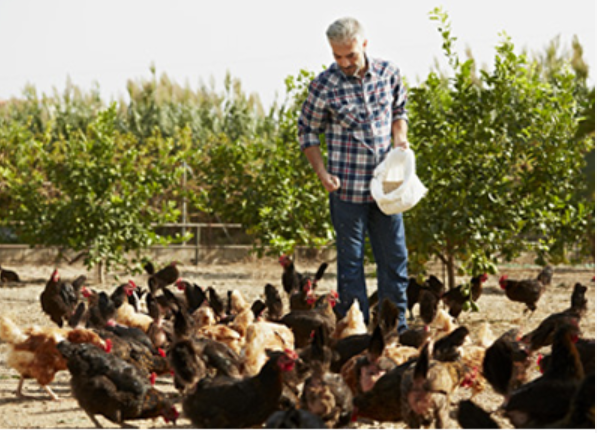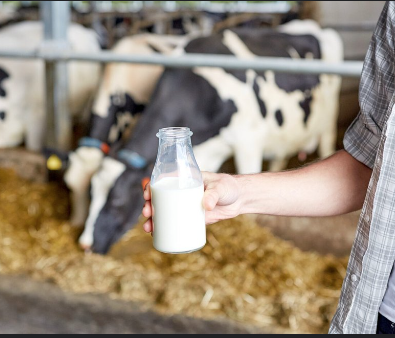Agriculture and Nuclear Power in the Tennessee River Valley
This information has been prepared by TVA in cooperation with the state of Alabama to provide guidance to the agriculture community in the event of a radiological emergency at a nuclear power plant within fifty miles of your farm. It explains those actions which may be necessary for you to take in order to protect yourself, your family, your crop and your farm animals.
introduction
Nuclear power plants are designed to operate safely. However, it is possible that an accident could be serious enough to result in a release of radioactive materials.
We cannot hear, see, feel, taste or smell radiation, but we are constantly exposed to radiation from both natural and man-made sources such as medical and dental x-rays, televisions and smoke detectors. This natural and man-made radiation is called background radiation. The amount of radiation dose a person gets is measured in millirems. The average American receives about 620 millirems per year from natural and man-made sources.
Federal authorities have established two emergency planning zones as the basis for planning to protect the public. Residents living within a ten mile radius of the plant must be protected from direct exposure in the event of radioactive release. People within a fifty mile radius must be protected from eating contaminated foods or drinking contaminated milk and water. This fifty mile zone is called the “Ingestion Pathway Zone.”
An accidental release of radiation into the atmosphere has the potential to affect you, your family, your livestock and the quality and marketability of your farm products. The information in this guide and the instructions from radio and television stations will help minimize the effects a radiological emergency could have on your farm.
if an emergency occurs
In the event of a radiological emergency at a nuclear power plant, several methods will be used to warn the public. Within the ten mile area residents will be warned primarily by radio and television stations. State and county emergency response organizations will determine protective action to be taken, and you will be kept informed.
During the period of the emergency, state and county officials will release information to the media on a regular basis. This information will contain the latest status on the emergency and actions that are being taken to protect you, your family and your farm. Also, the local agricultural extension agent will be kept advised on the status of the emergency and can provide information on protective actions that are being taken. You will also be advised of phone numbers you may call if you need additional information.
Protecting yourself and your farm The principal cause of exposure to radiation for ten to fifty miles from a nuclear power plant radiological emergency is the consumption of foods such as milk, fresh fruits, vegetables, locally processed products and water. In the event of a radiological emergency that involves the release of radioactive material into the environment, you will be advised of actions to prevent the contamination of milk, water and food products. Additionally, state and local governments will take actions to prevent the consumption of contaminated products.
Protecting your farm animals
Farm animals will not be evacuated during a radiological emergency, so sheltering is the most effective way to limit contamination. Protecting your animals can be done in several ways: 1. Place the animals in an enclosed shelter; close the doors and windows, if possible. Limit entry of rain water into the structure. Provide for adequate air supply to prevent overheating and suffocation. 2. If the animals must remain outside, to the extent possible, prevent contact with radioactive contamination. For example, pack the animals closely in an outdoor pen or herd them into a road underpass, cave, or wooded area. 3. Do not allow animals to graze unless directed to by emergency officials.
Milk
The most critical food product within the fifty mile zone is milk because of its particular susceptibility to radioactive contamination, the rapid distribution from the cow to the consumer, and the potential effects on children. Protective actions that can be taken are: 1. Shelter dairy cattle in an enclosed structure first. 2. Remove lactating dairy animals from contaminated pasture and provide a substitute of uncontaminated stored feed.
Copyright: (c) Dolgachov | Dreamstime.com
Protecting farmland and crops
Most farmland that is contaminated by a radiological emergency can be used productively within several days of the emergency. The actual length of time depends on the amount and types of radioactive material that settled on the land. Emergency officials will: 1. Take samples to determine the type and levels of contamination. 2. Recommend treatment procedures such as idling of the land, deep plowing of the soil, or alternative uses of the land. Do not take actions to use or destroy crops unless advised to do so by emergency officials. Emergency officials will issue special emergency bulletins on proper use and disposition of crops. For information on harvesting, storing and decontaminating your crops and land, you may contact the Morgan County Agricultural Extension Office at 256-773-2549.
Do not take actions to use or destroy crops unless advised to do so by emergency officials
Emergency officials will issue special emergency bulletins on proper use and disposition of crops. For information on harvesting, storing and decontaminating your crops and land, you may contact the Morgan County Agricultural Extension Office at 256-773-2549.






